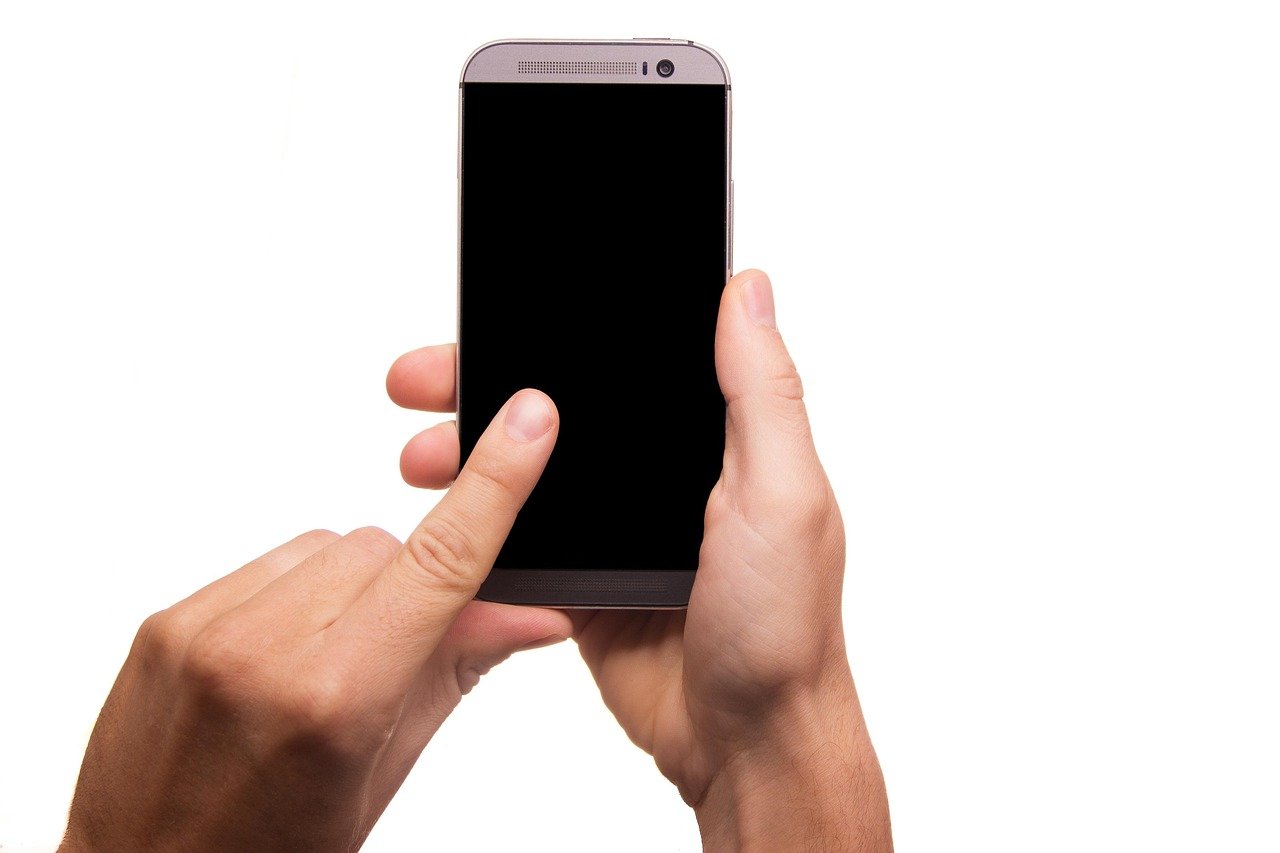Why Your Android Phone Can’t Send Text Messages: Common Culprits and Quick Fixes
Let’s dive into the usual suspects when your Android phone refuses to send text messages. Understanding these common causes is the first step toward a solution. We’ll start with the simplest checks and move on to more involved troubleshooting steps. Remember, patience is key, and often, the fix is easier than you think. As a tech enthusiast, I’ve encountered these problems countless times, and I’m here to share what I’ve learned.
1. The Basics: Signal, Airplane Mode, and Account Balance
Before you get into the nitty-gritty, let’s cover the fundamentals. These are the most common, easily overlooked issues that can prevent your texts from sending. It’s like checking if your car has gas before you start diagnosing engine problems.
- Signal Strength: This is the most obvious, yet often forgotten, factor. Your phone needs a decent signal to send messages. Check your signal bars – if you have weak or no signal, try moving to a different location. Buildings, especially those with thick walls, can block signals.
- Airplane Mode: Airplane mode disables all wireless communication, including cellular data and SMS. Make sure it’s turned off. You can usually find the airplane mode toggle in your quick settings (swipe down from the top of your screen).
- Account Balance (for Prepaid Plans): If you have a prepaid plan, ensure you have enough credit to send text messages, especially international ones. Insufficient funds are a frequent cause of sending failures.
My Experience: I once spent an hour troubleshooting a text message issue, only to realize I’d accidentally enabled Airplane mode. It happens to the best of us! Always start with these basic checks.
2. Incorrect Phone Number and Contact Issues
Sometimes, the problem isn’t your phone; it’s the information you’re using. Double-check the phone number you’re texting. A simple typo can prevent your message from reaching its destination. Also, ensure the contact information is correct, especially if you’re texting internationally.
- Verify the Phone Number: Make sure you’ve entered the correct phone number. A missing digit or an incorrect area code can cause the message to fail.
- Check International Numbers: If you’re texting someone in another country, ensure you’re using the correct international format, including the country code. For example, for the United Kingdom, the format is +44 followed by the phone number (without the initial zero).
- Contact Information: Review the contact’s information in your phone. Sometimes, a contact might have multiple numbers listed, and you might be accidentally texting the wrong one.
Expert Tip: Always save phone numbers in the international format (+[country code][phone number]) to avoid confusion, especially when traveling or texting internationally.
3. The Messaging App: Updates, Default Settings, and Cache
Your messaging app is the heart of your texting experience. Issues with the app itself can often lead to sending problems. Let’s troubleshoot the app itself.
- Update Your Messaging App: Outdated apps can have bugs that prevent messages from sending. Go to the Google Play Store, search for your messaging app (usually “Messages” by Google), and check for updates.
- Set the Correct Default App: Ensure your preferred messaging app is set as the default. Go to your phone’s settings, find the “Apps” or “Default apps” section, and make sure your messaging app is selected as the default SMS app.
- Clear the App Cache: The app’s cache stores temporary data that can sometimes become corrupted. Clearing the cache can resolve sending issues. Go to Settings > Apps > Messages > Storage, and tap “Clear cache.”
My Insight: I’ve found that clearing the cache is often a quick fix for various app-related issues, including sending problems. It’s like giving your phone a fresh start.
4. SIM Card Troubles: Insertion and Recognition
Your SIM card is the key to connecting to your mobile network. If it’s not inserted correctly or isn’t recognized, you won’t be able to send or receive texts.
- Check the SIM Card Insertion: Turn off your phone, remove the SIM card tray (usually found on the side of your phone), and reinsert the SIM card, ensuring it’s properly aligned. Refer to your phone’s manual for the correct orientation.
- Restart Your Phone: After reinserting the SIM card, restart your phone. This allows the phone to recognize the SIM card and connect to the network.
- SIM Card Issues: If the SIM card is damaged or not compatible with your phone, it can cause problems. Contact your carrier to get a new SIM card if you suspect this is the issue.
Avoid This Mistake: Don’t force the SIM card into the tray. If it doesn’t fit easily, you’re likely inserting it incorrectly.
5. Network and Carrier Issues: Outages and Settings
Sometimes, the problem isn’t your phone or the app; it’s your mobile carrier. Network outages or incorrect settings can prevent you from sending texts.
- Check for Carrier Outages: Visit your carrier’s website or use a service like Downdetector to check for any reported outages in your area.
- Mobile Data: Ensure mobile data is enabled. MMS messages (messages with pictures or videos) require a data connection. Go to Settings > Network & internet > Mobile network and make sure “Mobile data” is turned on.
- APN Settings: Access Point Names (APNs) are settings that allow your phone to connect to your carrier’s network. Incorrect APN settings can cause MMS issues. You can usually find the correct APN settings on your carrier’s website or by contacting customer support.
Expert Advice: If you suspect a carrier issue, contact your carrier’s customer support. They can often diagnose and resolve network-related problems.
Advanced Troubleshooting: Digging Deeper into Android Texting Problems
If the basic fixes don’t solve the problem, it’s time to delve deeper. These advanced troubleshooting steps address more complex issues that might be preventing your Android phone from sending text messages. We’ll cover blocked numbers, spam filters, and more.
1. Blocked Numbers and Spam Filters: The Silent Culprits

Sometimes, you can’t send messages to a specific person because they’ve blocked your number. Additionally, your messages might be flagged as spam, preventing them from being delivered.
- Check for Blocked Numbers: In your messaging app, check your blocked contacts list. You might have accidentally blocked the person you’re trying to text.
- Spam Filters: Carriers and devices use spam filters to block unwanted messages. If your message contains words or phrases often associated with spam, it might be blocked. Avoid using excessive capitalization, spammy language, or suspicious links.
- Reporting: If you’re sending a large volume of messages, your number might be flagged as spam. Contact your carrier to ensure your number isn’t blacklisted.
My Experience: I once had a client whose messages were being blocked because they were sending too many promotional texts. We had to adjust their messaging strategy to avoid the spam filter.
2. Chat Features and RCS Messaging: Compatibility and Settings
Rich Communication Services (RCS) is a newer messaging standard that offers features like read receipts and typing indicators. However, if RCS isn’t set up correctly, it can cause issues.
- Enable Chat Features: In your messaging app, go to Settings > Chat features and make sure “Enable chat features” is turned on.
- Compatibility: RCS only works if both you and the recipient have RCS enabled and are using a compatible messaging app. If the recipient doesn’t have RCS, your messages will fall back to SMS/MMS.
- Reset Chat Features: If you’re having trouble with RCS, try resetting the chat features. Turn off “Enable chat features,” clear the cache and data for the Messages app, and then turn chat features back on.
Expert Tip: If you’re texting someone with an iPhone, make sure they have “Send as SMS” enabled in their iMessage settings. This ensures your messages are delivered even if RCS isn’t supported.
3. Software and System Updates: Keeping Your Phone Current
Outdated software can cause all sorts of problems, including issues with sending text messages. Make sure your phone and messaging app are up to date.
- Update Your Phone’s Software: Go to Settings > System > System update and check for updates. Install any available updates.
- Update Your Messaging App: As mentioned earlier, check the Google Play Store for updates to your messaging app.
- Restart After Updates: After installing updates, restart your phone to ensure the changes take effect.
Benefit: Software updates often include bug fixes and performance improvements that can resolve sending issues.
4. Factory Reset (Last Resort): Erasing and Restoring

If all else fails, a factory reset might be necessary. This will erase all data on your phone, so back up your important files before proceeding.
- Back Up Your Data: Before performing a factory reset, back up your photos, videos, contacts, and other important files. You can use Google Drive or other backup services.
- Perform the Factory Reset: Go to Settings > System > Reset options > Erase all data (factory reset). Follow the on-screen instructions.
- Restore Your Data: After the reset, restore your data from your backup.
Warning: A factory reset will erase all data on your phone. Make sure you have a backup before proceeding.
MMS Troubleshooting: Addressing Multimedia Messaging Issues
MMS (Multimedia Messaging Service) messages, which include pictures, videos, and other media, can sometimes be more prone to sending problems than standard SMS messages. Here’s how to troubleshoot MMS issues.
1. Data Connection and MMS Settings
MMS messages require a data connection to send and receive. Ensure your data settings are correct.
- Enable Mobile Data: Make sure mobile data is turned on. Go to Settings > Network & internet > Mobile network and ensure “Mobile data” is enabled.
- Check APN Settings: As mentioned earlier, incorrect APN settings can cause MMS issues. Verify that your APN settings are correct for your carrier. You can usually find the correct settings on your carrier’s website or by contacting customer support.
- MMS Auto-Download: In your messaging app settings, ensure “Auto-download MMS” is enabled. This allows your phone to automatically download MMS messages.
My Experience: I’ve often found that simply toggling mobile data off and on can resolve MMS issues. It’s like giving the data connection a quick reset.
2. File Size Limits and Compatibility
Carriers often have file size limits for MMS messages. If your attachment is too large, it won’t send.
- Check File Size Limits: Different carriers have different file size limits for MMS messages. Check your carrier’s website to find out the limit.
- Compress Files: If your attachment is too large, try compressing it before sending. You can use a photo editing app to reduce the file size.
- Compatibility: Ensure the recipient’s phone and carrier support the file type you’re sending. Some older phones might not support certain video or image formats.
Expert Tip: For maximum compatibility, keep MMS attachments under 1 MB in size.
3. Group MMS Issues
Group MMS messages can sometimes be problematic. Here’s how to troubleshoot them.
- Group MMS Settings: In your messaging app settings, ensure “Group messaging” or “Send an MMS reply to all recipients (group MMS)” is enabled.
- Recipient Compatibility: All recipients in a group MMS must have MMS enabled and be using a compatible messaging app.
- Individual Messages: If you’re having trouble with a group MMS, try sending individual messages to each recipient to see if the problem is with a specific person.
Benefit: Properly configured group MMS settings ensure everyone in the group receives all messages.
When to Seek Professional Help: Contacting Your Carrier or a Technician
If you’ve tried all the troubleshooting steps and are still unable to send text messages, it’s time to seek professional help.
1. Contact Your Mobile Carrier

Your mobile carrier can often diagnose and resolve network-related issues.
- Contact Customer Support: Call your carrier’s customer support line and explain the problem. They can check for network outages, verify your account settings, and provide further assistance.
- Visit a Store: If possible, visit your carrier’s store. A representative can often troubleshoot the issue in person and provide a new SIM card if necessary.
My Advice: Be prepared to provide details about the problem, such as when it started, which contacts are affected, and any troubleshooting steps you’ve already tried.
2. Consider a Phone Repair Technician

If the issue persists, there might be a hardware problem with your phone.
- Find a Reputable Technician: Search for a reputable phone repair technician in your area. Read reviews and choose a technician with experience repairing Android phones.
- Explain the Problem: Explain the problem to the technician and provide any relevant information, such as when the problem started and any troubleshooting steps you’ve already tried.
Warning: Be cautious about where you take your phone for repair. Choose a reputable technician to avoid potential scams or further damage to your device.
Preventive Measures: Keeping Your Android Texting Smooth

Prevention is always better than cure. Here are some tips to keep your Android phone’s texting functionality running smoothly.
1. Regular Maintenance and Updates
Regular maintenance and updates are crucial for preventing texting issues.
- Update Your Phone’s Software: As mentioned earlier, regularly update your phone’s software to ensure you have the latest bug fixes and performance improvements.
- Update Your Apps: Keep your messaging app and other relevant apps updated.
- Clear Cache Regularly: Periodically clear the cache for your messaging app and other apps to prevent temporary data from causing problems.
Benefit: Regular updates and maintenance can prevent many common texting issues.
2. Manage Storage Space
Insufficient storage space can cause various problems, including issues with sending and receiving text messages.
- Monitor Your Storage: Regularly check your phone’s storage space. Go to Settings > Storage to see how much space is available.
- Delete Unnecessary Files: Delete old photos, videos, and other files you no longer need.
- Uninstall Unused Apps: Uninstall apps you don’t use to free up storage space.
My Experience: I’ve learned the hard way that running out of storage can cause all sorts of unexpected problems. Now, I regularly clean up my phone’s storage to avoid issues.
3. Be Mindful of Spam Filters and Messaging Practices
Avoid practices that might trigger spam filters.
- Avoid Spammy Language: Don’t use excessive capitalization, spammy language, or suspicious links in your messages.
- Text Only Known Contacts: Avoid texting unknown numbers or sending mass texts to a large number of recipients.
- Respect Recipient Preferences: If someone asks you to stop texting them, respect their wishes.
Expert Tip: If you’re using your phone for business, be mindful of spam regulations and best practices.
Frequently Asked Questions (FAQ)
Here are some frequently asked questions about Android phones not sending text messages, with concise answers.
- Why can’t I send text messages on my Android phone?
Common causes include poor signal, Airplane mode enabled, incorrect phone number, outdated messaging app, SIM card issues, network outages, blocked numbers, and spam filters.
- How do I fix an Android phone that won’t send text messages?
Start by checking the basics (signal, Airplane mode, account balance). Then, update your messaging app, clear the cache, check your SIM card, and verify your contact information. If those steps don’t work, try resetting your network settings or performing a factory reset (as a last resort).
- How do I know if someone has blocked my number?
There’s no definitive way to know, but you can try calling the person (if it goes straight to voicemail, you might be blocked), texting other people to see if your messages are going through, or checking if the person appears as a suggested contact after deleting their number.
- Why can’t I send MMS messages?
MMS issues are often related to data connection problems, incorrect APN settings, file size limits, or recipient compatibility. Make sure mobile data is enabled, check your APN settings, and ensure your attachment is within the file size limit.
- When should I contact my mobile carrier?
If you’ve tried all the troubleshooting steps and are still unable to send text messages, contact your mobile carrier. They can check for network outages, verify your account settings, and provide further assistance.
